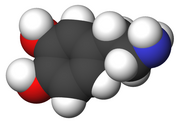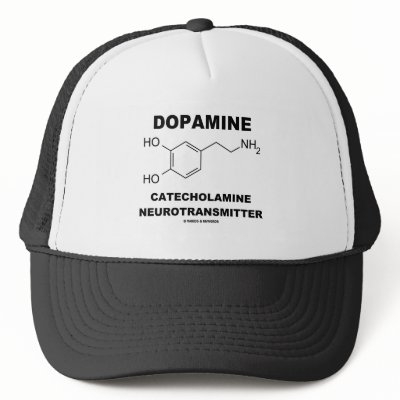Article: A unified framework for the functional organization of the medial temporal lobes and the phenomenology of episodic memory
Author: Charan Ranganath
- Abstract
- What is the role of the medial temporal lobe in recognition memory (I'll get to what that is in a second)?
- Evidence is consistent with the notion that MTL subregions differ in terms of the kind of information that they process and represent.
- These subregions support episodic memory by binding item and context information.
- My comments
- What kind of information are we talking about here (I'm asking this question in the most concrete sense, with 'kind' here meaning some physically realizable data structure, not 'Oh, it "represents" short-term memories')?
- How is this information processed (i.e., what (neuronal) procedures (computations) underlie such processes)?
- What and how is this information represented?
- Side rant
- I'm so annoyed by neuroscientists throwing the words information, process, representation around as if they actually mean something when they say it. I feel like it is used to cover up ignorance about whatever said person is talking about.
- Presumably, we're talking about encoding, but no one actually knows how the brain encodes sensory input (e.g., how does the brain transform light into the color red?). That is, there's no indication as to what the brain's encoding scheme is other than that it probably involves spike trains.
- What in the hell does it mean to bind item and context information?
- Are they being 'added' together in some sense? Multiplied? Composed?
- I'm going to go out on a limb and suggest that the author didn't really consider what binary operation that neurons are carrying out to cause this so-called binding to occur.
- History of Recognition Memory
- Milner and colleagues showed that extensive damage to the MTL impairs the formation of new memories for events, while sparing many other processes, such as motor skill learning.
- Research in monkeys corroborates this finding, especially on a delayed non-match to sample task with a long delay or large list of items to-be-remembered is given.
- More research suggested that the perirhinal cortex (PRc) plays a large role in recognition memory (same task as previous point)
- Deficits were found even with no delay
- Lesions of hippocampus proper (or damage to HC through the fornix) had very mild effects on recognition memory
- Similar effects found in rats and humans
- Two Component Models of the MTL
- Cohen et. al's Relational Memory Theory
- PRc and parahippocampal cortex (PHc) encode specific constituent elements of an event (items)
- Hippocampus encodes representations of the relationships of the items.
- Complementary Learning Systems (CLS)
- Hippocampus is specialized to rapidly encode new information
- Sparse, minimally overlapping representations that are well suited to encode specific episodes
- PHc
- Represents stimuli and events in terms of their constituent features; stimuli with overlapping representations have overlapping neural representations.
- Aggleton and Brown's Unnamed Model
- The hippocampus supports recall or recognition based on conscious recollection.
- HC and PHc differentially support different subjective experiences.
- What do these models predict about recognition memory?
- Relational Theory
- Relational information depends on HC, but PRc should be sufficient to support item recognition without relational information
- CLS
- Emphasizes the distinction in the processes that underlie recognition memory (familiarity vs. recollection).
- What is the degree of overlap in recognition memory signals elicited by studied items and unstudied lures?
- The cortical component of the model produces a signal that indexes the global match between a cue and all previously learned information due to broad overlapping stimulus representations.
- The hippocampal component produces a bimodal signal: some proportion of old items are indistinguishable from new items and other have very strong responses that are easily distinguishable.
- The HC should typically be more involved in recollection and the PHc more so in familiarity.
- BIC Model
- Lesion Evidence Suggests a Disproportionate Role for the Hippocampus in Recollection
- Familiarity-based recognition is supported by item representations in PRc
- Recollection should additionally depend on the HC and PHc to recover information about the corresponding study context.
- Humans with incidental fornix damage showed significant recollection impairments, whereas familiarity was intact.
- Similar data are seen in rats and humans (asymmetric ROC curve intact, symmetric when not)
- Functional Imaging Evidence for Dissociable Roles of MTL Subregions in Item Recognition
- Familiarity is related to the strength of an item's representation
- Emerges as a byproduct of experience dependent tuning of the representation of an item during encoding.
- PRc activity should differ during encoding of items that will be recognized primarily on the basis of familiarity relative to items that will be missed, and PRc activity during retrieval should be sensitive to gradations in familiarity.
- Recollection depends on the successful encoding of the item and the association between the item and the context.
- Input from PRc to the hippocampus may trigger completion of the activity pattern that occurred during the learning event and lead to activation of the associated contextual representations in PHc networks. Finally, output from PHc to neocortical regions would elicit the reinstantiation of neocortical representations of the various aspects of the contextual state at the time of the original encoding event, thereby leading to recollection.
- Thus, hippocampal and PHc activity during encoding and retrieval should be higher for items that are subsequently recollected relative to items that are subsequently recognized primarily on the basis of familiarity.
- What does process-pure mean?
- PRc activation was increased during encoding of word pairs in the context of a definition (thereby encouraging their treatment as a single novel item or concept), as compared with encoding of word pairs in the context of a sentence frame (thereby encouraging them to be treated as separate items)
- The MTL is not the Site of Conscious Recollection
- MTL can support recovery of some kinds of information about the past, and this information does not always correspond to conscious experience. If this is the case, how do we make sense of the role of the hippocampus in conscious experiences like recollection? Although the availability of contextual information is generally a prerequisite for recollection, recollective experience ultimately is the outcome of a constructive process by which recovered information is used to make an attribution about the past.
 |
| Figure 1 |

















